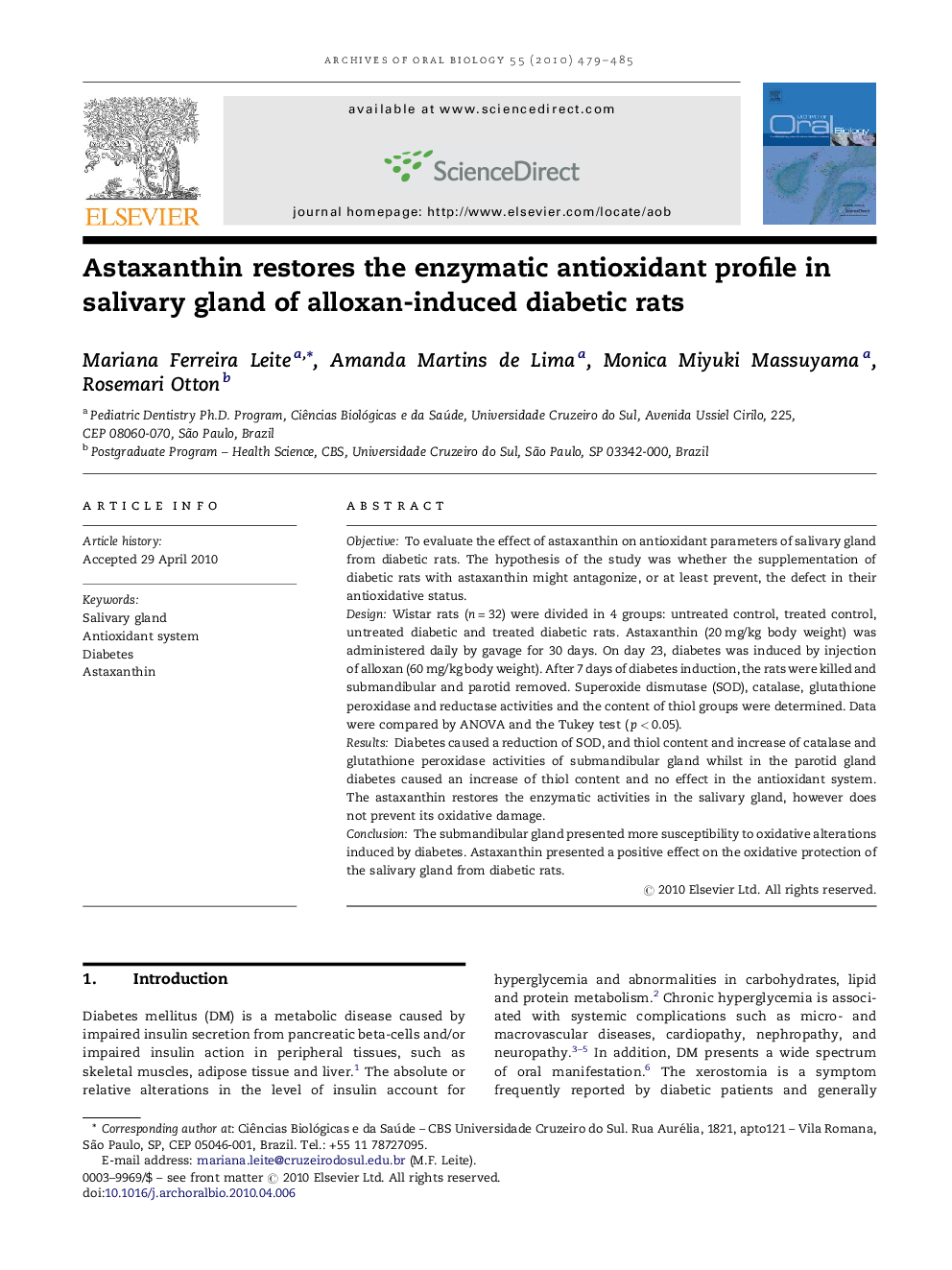| Article ID | Journal | Published Year | Pages | File Type |
|---|---|---|---|---|
| 3121067 | Archives of Oral Biology | 2010 | 7 Pages |
ObjectiveTo evaluate the effect of astaxanthin on antioxidant parameters of salivary gland from diabetic rats. The hypothesis of the study was whether the supplementation of diabetic rats with astaxanthin might antagonize, or at least prevent, the defect in their antioxidative status.DesignWistar rats (n = 32) were divided in 4 groups: untreated control, treated control, untreated diabetic and treated diabetic rats. Astaxanthin (20 mg/kg body weight) was administered daily by gavage for 30 days. On day 23, diabetes was induced by injection of alloxan (60 mg/kg body weight). After 7 days of diabetes induction, the rats were killed and submandibular and parotid removed. Superoxide dismutase (SOD), catalase, glutathione peroxidase and reductase activities and the content of thiol groups were determined. Data were compared by ANOVA and the Tukey test (p < 0.05).ResultsDiabetes caused a reduction of SOD, and thiol content and increase of catalase and glutathione peroxidase activities of submandibular gland whilst in the parotid gland diabetes caused an increase of thiol content and no effect in the antioxidant system. The astaxanthin restores the enzymatic activities in the salivary gland, however does not prevent its oxidative damage.ConclusionThe submandibular gland presented more susceptibility to oxidative alterations induced by diabetes. Astaxanthin presented a positive effect on the oxidative protection of the salivary gland from diabetic rats.
